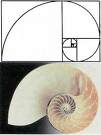 I’d heard Elizabethtown was a bit quirky, but thought it might still be worth watching. It wasn’t. It was far more than quirky – it was off its tree several times. Early in the piece the characters, especially those from Kentucky, came across as fun and eccentric, but then the thing lost its way almost completely and decided it was a late starter in the road movie stakes and spent the last ten minutes with Orlando Bloom on the road, driving and visiting a number of tourist sites. Very odd. Bloom had been going to kill himself early in the piece after having cost his company a billion dollar sale (!) but didn’t because he was interrupted by his annoying little cell phone. His intention to go to his father’s funeral and then come back and kill himself was mostly forgotten about for at least an hour until it suddenly was used as an excuse for why Bloom couldn’t fall in love with Kirsten Dunst (who was definitely eccentric, even though she was an airline hostess – of an airline that plainly wasn’t doing very well, flying a jet with only one passenger). The minor characters were fun, but the film couldn’t make up its mind what it was doing: why on earth was Susan Sarandon given a tap dance to do when plainly she had no talent in this direction? How did Bloom and Dunst manage to talk all night on cellphones without having to recharge the batteries (in one shot the phone is connected to a socket, but only once); why did they keep avoiding falling in love with each other? What happened to ‘Ben’ the supposed excuse for Dunst not being able to fall in love? How did she manage to write an entire road book with CDs attached that would cover a 42 hour road trip – in the day or so between Bloom deciding he was definitely going home and then going? The thing started with a real sense of style, then got stuck into the ‘funny backwoods’ people thing in Kentucky, introduced us to a whole host of characters, most of whom didn’t actually do anything in the story (including the one who supposedly has so upset Bloom’s mother) and then gets waylaid by an odd love story that has no suspense whatsoever.
I’d heard Elizabethtown was a bit quirky, but thought it might still be worth watching. It wasn’t. It was far more than quirky – it was off its tree several times. Early in the piece the characters, especially those from Kentucky, came across as fun and eccentric, but then the thing lost its way almost completely and decided it was a late starter in the road movie stakes and spent the last ten minutes with Orlando Bloom on the road, driving and visiting a number of tourist sites. Very odd. Bloom had been going to kill himself early in the piece after having cost his company a billion dollar sale (!) but didn’t because he was interrupted by his annoying little cell phone. His intention to go to his father’s funeral and then come back and kill himself was mostly forgotten about for at least an hour until it suddenly was used as an excuse for why Bloom couldn’t fall in love with Kirsten Dunst (who was definitely eccentric, even though she was an airline hostess – of an airline that plainly wasn’t doing very well, flying a jet with only one passenger). The minor characters were fun, but the film couldn’t make up its mind what it was doing: why on earth was Susan Sarandon given a tap dance to do when plainly she had no talent in this direction? How did Bloom and Dunst manage to talk all night on cellphones without having to recharge the batteries (in one shot the phone is connected to a socket, but only once); why did they keep avoiding falling in love with each other? What happened to ‘Ben’ the supposed excuse for Dunst not being able to fall in love? How did she manage to write an entire road book with CDs attached that would cover a 42 hour road trip – in the day or so between Bloom deciding he was definitely going home and then going? The thing started with a real sense of style, then got stuck into the ‘funny backwoods’ people thing in Kentucky, introduced us to a whole host of characters, most of whom didn’t actually do anything in the story (including the one who supposedly has so upset Bloom’s mother) and then gets waylaid by an odd love story that has no suspense whatsoever.Roger Ebert tells us that the original movie was another twenty minutes longer – and never seemed to know when to end. A good deal of it related to the road trip at the end (which must have seemed mind-boggling) and an epilogue where the shoe that missed becomes the shoe that hits. A relief that this is all gone, I’d say. Berardinelli rightly says that the cut down version still doesn’t address the film’s flaws, and I’d greatly agree. It’s a matter of structure. The love-story is waffly, the point of the film is waffly (is it about getting back to your roots, or forgiving your father, or what?)
I have to link to the superbly cutting review by Peter Bradshaw in The Guardian. He puts it so much better than I can, and far more succinctly.






